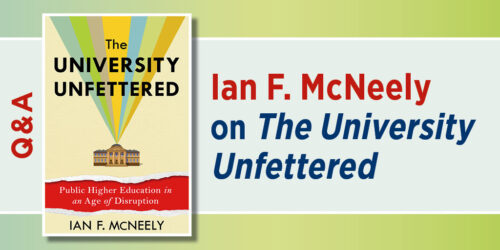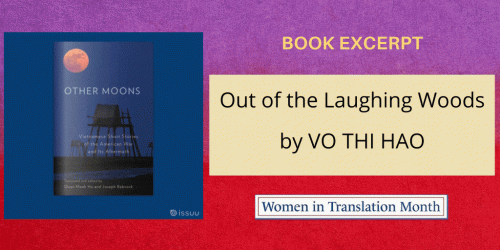Gertrude Stein, Alan Dershowitz, Barbara Will, and the Controversy at the Met
The recent opening of The Steins Collect at the Metropolitan Museum of Art has ignited a controversyregarding Gertrude Stein’s fascist past. At the center of this debate is Barbara Will’s recent book Unlikely Collaboration: Gertrude Stein, Bernard Faÿ, and the Vichy Dilemma.
As Will’s book reveals, Stein, herself a Jew, supported various Vichy policies and in fact translated several of Marshal Philippe Pétain’s speeches. Moreover, she had a close relationship with Bernard Fay, who was director of the Bibliothèque Nationale during the Vichy regime and overseer of the repression of French freemasons. It is through Fay’s protection that Stein was able to remain in France.
Initially, the Met made no mention of Stein’s Vichy past but, as reported in the New York Times, after objections they decided to add a few sentences to the final wall text of the exhibition, describing how Gertrude Stein’s affiliation with Bernard Fäy, the Vichy collaborator and Nazi agent, contributed to the protection of Stein and her companion Alice B. Toklas in France during the war. They also direct people to Barbara Will’s Unlikely Collaborator.
The story was also covered in the New Yorker, and in an interview Will suggests:
In a sense, the curators dropped the ball by not recognizing and anticipating this response. If one asks how and why this art survived the war [and] specifically, the art in Gertrude’s collection—then the issue of Gertrude Steins’s Vichy commitments becomes very important indeed. Why was Stein’s apartment, where most of the art was stored, left undisturbed during the war? The only firm answer we have—with documented proof—is that Bernard Faÿ kept his eye on the apartment and intervened when it looked like the seals on the doors were going to be broken and the Nazis were going to seize the art works.
Others objecting to the Met’s omission include New York City politicians Scott Stringer and Dov Hikind as well as Alan Dershowitz. In Suppressing Ugly Truth for Beautiful Art , a post in The Huffington Post, Dershowitz goes over the evidence linking Stein’s connection to and sympathy for the Vichy regime while criticizing the Met for not providing a full historical picture. He writes:
By offering a false explanation of how Stein and Toklas “remarkably” survived the Holocaust, while living in a town from which dozens of Jewish children were deported to death camps, the Met has distorted the history of the Holocaust and failed to point a finger of blame at collaborators, such as Stein, who made it possible.
2 Responses
Leave a Reply
You must be logged in to post a comment.






Dear ,
you are right with your very interesting article and they are right in the newspapers looking for the historic truth about Gertrude Stein in this however wonderfull exhibition,”The Steins collect; Matisse, Picasso,Cezanne and the Parisian Avant Garde” in NewYork at the Metropolitan Museum of Art .
Because what a pleasure to see the portrait of Gertrude Stein by Riba-Rovira .Who was as Picasso an antifascist and antinazi artist .Persecuted by Franco and the Nazis .
But who is in this exhibition ,thanks to Rebecca Rabinow and Edward Burns, perhaps
the only one artist would fought them weapons in his hands .
Whose father was in jail after the spanish civil war .So Riba-Rovira is beside Tchelitchew and Balthus and Francis Rose near Picabia and Picasso in the last room of this exhibition with Cézanne, Matisse .
And you have an interesting article in Appollo London Revew about him .And also in Artes Magazine from San Francisco where the exhibition was before .
But the main document as a revelation is with the mention beside the picture with the Preface Gertrude Stein wrote for first Riba-Rovira’s exhibition in the Galerie Roquepine in Paris on 1945 .
Where we can read Gertrude Stein writing Riba-Rovira “will go farther than Cezanne…will succeed in where Picasso failed…I am fascinated ” by Riba-Rovira Gertrude Stein tells us .
And you are you also fascinated indeed as Gertrude Stein by Riba-Rovira ?
Me I am when I see « L’Arlequin » on the free access website of « Galeria Muro ».
But Gertrude Stein spoke also in this same document about Matisse and Juan Gris .
Riba-Rovira went each week in Gertrude Stein’s saloon rue Christine with Masson ,Hemingway and others. By Edward Burns and Carl Van Vechten we can know Riba-Rovira did others portraits of Gertrude Stein .
But we do not know where they are ;and you do you know perhaps ?
With this wonderful portrait we do not forget it is the last time Gertrude Stein sat for an artist who is Riba-Rovira .
This exhibition presents us a world success with this last painting portrait before she died .And her last Gertrude Stein’s Art Retrospective before dead .
It illuminates the tone as an esthetic light over that exhibition now at the Metropolitan Museum of Art of New York thanks to Curator Rebecca Rabinow .
Coming from San Francisco “Seeing five stories” in the Jewish museum to Washington in National Portrait Gallery .And now in the Metropolitan Museum of Art of New York for our pleasure .
And the must is to see for the first time in the same place portraits by Picasso, Picabia, Riba-Rovira, Rose ,Tall-Coat, Valloton .Never before it was .
You have the translate of Gertrude Stein’s Riba-Rovira Preface on english Gertrude Stein’s page on Wikipedia and in the catalog of this Roquepine exhibition you can see in first place the mention of this portrait .And also other pictures Gertrude Stein bought to Riba-Rovira .
There is another place where you can see now Riba-Rovira’s works in an exhibition in Valencia in Spain “Homenage a Gertrude Stein” by Riba-Rovira in Galleria Muro ,if you like art …
But we do not missed today that all over Europe a very bad wind is blowing again bringing the worth in front of us .And we must know that at least were two antinazis and antifascists in this exhibition but the only one fighting weapons in hands would be Riba-Rovira who did one of the first three « affiches » supporting Republicans in the beguining Spanish civil war .
Seeing Potrait of Gertrude Stein by Riba-Rovira in the Metropolitain Museum of New York with Picasso ,Cézanne ,Matisse we feel a recreation of spirit .
With the current controversy about Gertrude Stein and after the Edward Burns’s answer it is interesting to Know one of the last Gertrude Stein’s vew before dying when she speaks about art it is also politic .
Stein’s preface to the exhibition by Francisco Riba Rovira at Roquepine Gallery in May 1945:
« It is inevitable that when we really need someone we find him. The person you need attracts you like a magnet. I returned to Paris, after these long years spent in the countryside and I needed a young painter, a young painter who would awaken me. Paris was magnificent, but where was the young painter? I looked everywhere: at my contemporaries and their followers. I walked a lot, I looked everywhere, in all the galleries, but the young painter was not there. Yes, I walk a lot, a lot at the edge of the Seine where we fish, where we paint, where we walk dogs (I am of those who walk their dogs). Not a single young painter!
One day, on the corner of a street, in one of these small streets in my district, I saw a man painting. I looked at him; at him and at his painting, as I always look at everybody who creates something I have an indefatigable curiosity to look and I was moved. Yes, a young painter!
We began to speak, because we speak easily, as easily as in country roads, in the small streets of the district. His story was the sad story of the young people of our time. A young Spaniard who studied in fine arts in Barcelona: civil war; exile; a concentration camp; escape. Gestapo, another prison, another escape… Eight lost years! If they were lost, who knows? And now a little misery, but all the same the painting. Why did I find that it was him the young painter, why? I visited his drawings, his painting: we speak.
I explained that for me, all modern painting is based on what Cézanne nearly made, instead of basing itself on what he almost managed to make. When he could not make a thing, he hijacked it and left it. He insisted on showing his incapacity: he spread his lack of success: showing what he could not do, became an obsession for him. People influenced by him were also obsessed by the things which they could not reach and they began the system of camouflage. It was natural to do so, even inevitable: that soon became an art, in peace and in war, and Matisse concealed and insisted at the same time on that Cézanne could not realize, and Picassoconcealed, played and tormented all these things.
The only one who wanted to insist on this problem, was Juan Gris. He persisted by deepening the things which Cézanne wanted to do, but it was too hard a task for him: it killed him.And now here we are, I find a young painter who does not follow the tendency to play with what Cézanne could not do, but who attacks any right the things which he tried to make, to create the objects which have to exist, for, and in themselves, and not in relation.
This young painter has his weaknesses and his strengths. His force will push him in this road. I am fascinated and that is why he is the young painter who I needed. He is Francisco Riba Rovira. »
Gertrude Stein
Perhaps you have something to tell about when Gertrude Stein tells us on Cezanne, Riba-Rovira, Matisse, Picasso, Juan Gris…
Because why did she help Riba-Rovira ?
Was she only fascinated by his art ?
Was it a politic mistification and manipulation to make on his back a new vitginity for her…
Because as she tells ,he was persecuted by the nazi .Certainly arrested after “sabotages” in coke working in St Etienne ,if he would not escape from Vannes in a transit camp where the ss wera from Holland he would be send to Mathausen as a red and republican spanish .
But in all that when we saw in the Met the portrait of Gertrude Stein he did we can read in his way of painting a kind touch of something hieratic ,very straight ,as you must to be after beeing down .
All his life fighting the faschism as with Picasso when they did the book to support coke miners in the Asturies who were on stricke in in the sixties …